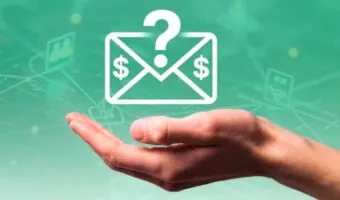5 Worst Email Marketing Mistakes
Email is integral, but crowded inboxes hinder engagement. Standing out is crucial. Avoid these key email marketing mistakes to prevent deletion or unsubscribe.

At current growth rates, more than 316 billion emails will be sent each day by 2021. This includes emails that are sent personally, professionally, and promotionally. In fact, between 2014 and 2018, the average office worker received 80 emails per day and sent more than 40.
Email is part of our daily lives and many people can’t go more than a few hours without checking it. But all of this buzz doesn’t necessarily translate into high engagement. With clogged inboxes, it’s hard to stand out, and easy for subscribers to delete messages, unsubscribe or block users entirely over a poor email experience.
You spend so much money and effort moving audiences deeper into the sales funnel and turning them into subscribers, don’t waste it by driving them away with bad email practices. It is time to audit your email marketing to make sure you aren’t breaking any of these cardinal email rules.
The five worst email marketing mistakes that we are going to cover in this guide include:
The five worst email marketing mistakes that we are going to cover in this guide include:
- Over-sending Emails
- Failing to Give Customers Clear Subscription Options
- Overdesigning and Crowding Your Email Content
- Sending the Wrong Remarketing Content
- Skipping Email Segmentation
If you are guilty of any of these email crimes, now is the time to change how you communicate with your customers. This blog is going to let you know some key email marketing mistakes to avoid.
Mistake #1: Over-Sending Emails
When you first invest in email marketing, your messages are likely scheduled and highly structured. However, as efforts become more successful, you may be tempted to send out more emails to keep engagement and traffic rolling, but by doing so you’d be committing one of many common email marketing mistakes. An extra email here turns into a new weekly message there, and soon your customers can’t keep up—and won’t want to.
What started as an effective way to connect with customers can quickly become the main reason they unsubscribe. This brings up one of our top email marketing mistakes: over-sending emails.
Email burnout is a very real problem that your brand faces. Your customers will start to ignore your emails, become annoyed by their frequency, and eventually unsubscribe. Consider some of these statistics shared by Campaign Monitor on reasons why customers unsubscribe or block branded emails:
- 45.8% of customers have flagged an email as spam because the company sent emails too often. This was the top reason for flagging something as spam.
- When asked how businesses could improve their email efforts, the top reason was that they should send fewer emails, with 43.9% of users recommending that option.

Campaign Monitor also reports that the more emails you send, the lower your read rate falls. Even if your customers aren’t blocking you, they will start to disengage and ignore your brand messaging.
You can increase your email frequency or send an extra email here or there, but you should keep an eye on your metrics to make sure you’re not turning off your customers who don’t want to hear from you daily – or multiple times per day.
Mistake #2: Failing to Give Subscribers Clear Options
If you operate a large business or eCommerce brand, you may have multiple email subscriptions for various audiences. Just look at all of the newsletters offered by the New York Times. You can sign up for daily morning news updates along with weekly segments from NYT Parenting and niche newsletters related to soccer, California, climate change, or sports.

One of the worst email marketing mistakes a company can make is assuming that your customers want to sign up for all of your email newsletters, or limiting the control that users have over their settings.
When your users unsubscribe from an email, bring them to a landing page confirming their unsubscription and show them what else they are subscribed to. Your users will appreciate the ability to manage their subscriptions – even if they are unsubscribing from everything.
Giving your customers more control can actually keep them engaged with your brand. They might not want a daily message but wouldn’t mind a weekly update.
This will also prevent customer frustration from thinking they unsubscribed from all of your emails when really you just took them off of one list. (This can also prevent FTC CAN-SPAM Act complaints.)
B2B brands can also benefit from giving subscribers control of the email content they receive. For example, if your blog covers news relevant to CEOs, project managers, marketers, and client service teams, then subscribers in those categories can self-identify and make sure the content they see is relevant to their interests.
The end result of this marketing change is less burnout and better email marketing results as your customers see the content they actually care about at a frequency that they want.
Mistake #3: Overdesigning and Crowding Your Email Content
As marketers try to pull back on the number of emails they send, they instead end up overcrowding their email messaging with too many deals, products, or announcements. The idea is that they want the same amount of content going out, but in fewer messages.
When it comes to email messaging, keep it simple. The days of cluttered email newsletters are almost behind us, if only today’s email marketers would just let them go.
Stick to one main message in your content – and tie that message directly back to your subject line. You can have secondary and tertiary offers lower in the email, but make sure your hero image is the main focus. You should also check to make sure the email loads quickly and looks good on mobile devices – even when the user is off Wi-Fi. This way your customers won’t get frustrated by bulky email images.
Once again, this is where your data comes in. Look to see which emails perform best and what offers your customers click on. You can use this analysis to find your sweet spot for how many offers to add and where to place them in your email layout. For new email marketers, you rely on existing email templates that come with your email service provider to use a proven layout that works.
Mistake #4: Sending the Wrong Remarketing Content
Remarketing is a particularly effective form of email marketing for eCommerce brands. Remarketing is the process of sending targeted emails to people who have already bought from you. These existing customers are significantly more likely to make a purchase than new customers. However, email remarketing isn’t as easy as it sounds. You can easily turn off customers because you assume information about them or send the wrong content.
The easiest case study to explain how poor remarketing made our list of email marketing mistakes is to look at a fashion retailer like Dillards. If a customer buys a pair of men’s shoes, the company could send emails with other types of menswear, accessories, and products related to the purchase. However, too often, the retailer will instead send remarketing emails trying to get the customer to buy more shoes in a similar style – or even remarket them with the same shoe. This completely disregards the customer’s needs and their position in the purchasing cycle.
Look at how you remarket to your customers. What kinds of items do you promote? How do they fit with shoppers’ profiles and buyer journeys? The best way to improve your email marketing is by putting the needs of your customers first and avoiding these costly email marketing mistakes.
Mistake #5: Skipping Email Segmentation
One of the biggest email marketing mistakes in the early days of email was failing to segment customer lists. Most email marketing providers like MailChimp make segmentation easy – and many marketing tools have AI systems now that auto segment users for you. Your audiences are tired of generic marketing. They don’t want the same offers that everyone else who buys from your receives. Give your customers targeted content based on their past behavior, demographics, and needs.
The team at Jilt had some eye-opening statistics about email segmentation. Despite the fact that 74% of marketers say personalization is a valuable way to increase engagement and 94% say it is an important part of their email marketing strategy, only 5% of companies personalize extensively. Segmentation is something that everyone knows they should be doing, but few are.
Email marketing in 2019 doesn’t mean pushing harder (reaching more people with more content) but rather pushing smarter. It is better to send fewer emails to the right people if you want to see better results.
Enhance Your Email Marketing Efforts
Fixing these email marketing mistakes doesn’t have to be hard. A few of these issues can be adjusted with a few small changes to your marketing strategy – you just have to know what your customers want and why.
At KodingWeb, we specialize in email marketing automation and personalization. We handle effective list management and design engaging templates to bring your customers in. Let us conduct an assessment on your email maturity to see where you can improve and how much you can grow your marketing efforts with the right strategy.

 ?
?


